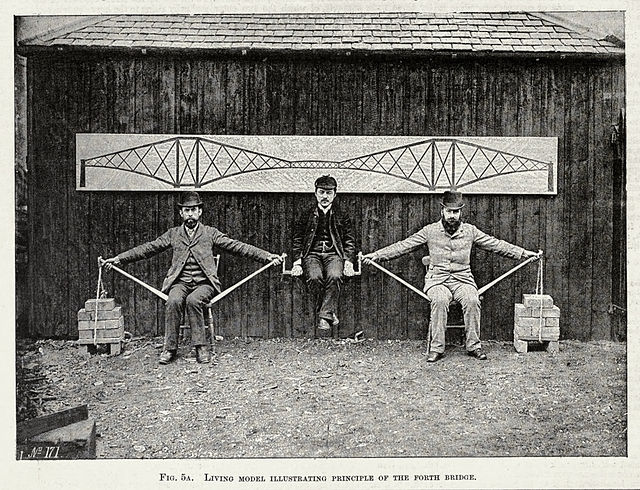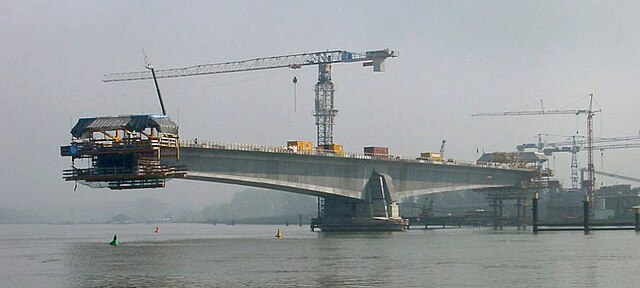The Forth Bridge is a cantilever railway bridge across the Firth of Forth in the east of Scotland, 9 miles west of central Edinburgh. Completed in 1890, it is considered a symbol of Scotland, and is a UNESCO World Heritage Site. It was designed by English engineers Sir John Fowler and Sir Benjamin Baker. It is sometimes referred to as the Forth Rail Bridge, although this is not its official name.
Forth Bridge
Close up on the base of one of the three double-cantilevers of the bridge
Illustration of the cantilever principle
The southern approach to the Forth Bridge, designed by James Carswell
A cantilever bridge is a bridge built using structures that project horizontally into space, supported on only one end. For small footbridges, the cantilevers may be simple beams; however, large cantilever bridges designed to handle road or rail traffic use trusses built from structural steel, or box girders built from prestressed concrete.
The Pierre Pflimlin Bridge is a balanced cantilever made of concrete, shown here under construction.
The original style of cantilever bridge
The structural principles of the suspended span cantilever bridge
The Vejle Fjord Bridge is a concrete bridge built using the balanced cantilever method.







